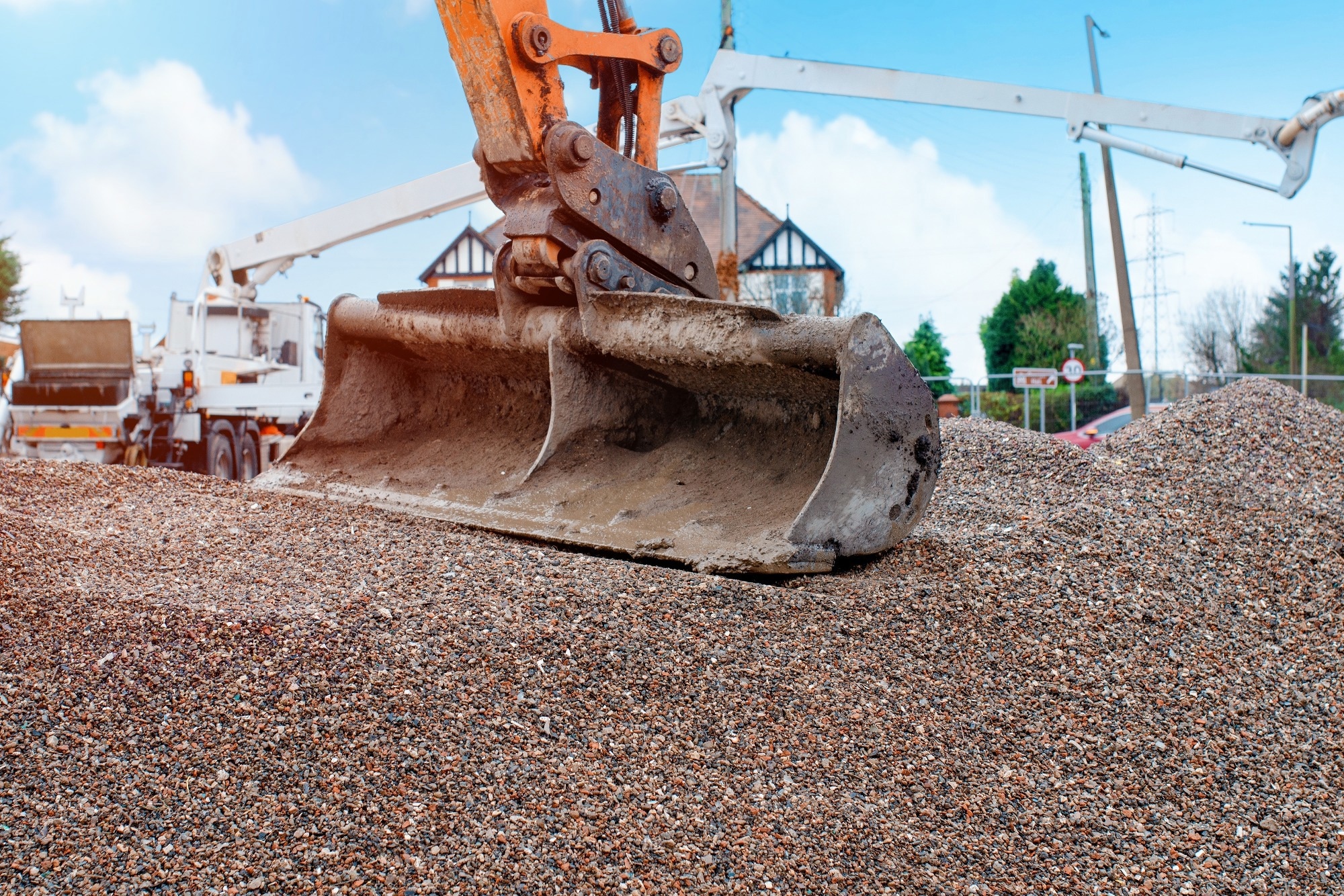 By Nidhi DhullReviewed by Susha Cheriyedath, M.Sc.Oct 28 2024
By Nidhi DhullReviewed by Susha Cheriyedath, M.Sc.Oct 28 2024A recent article published in Ain Shams Engineering Journal assessed the mechanical properties of sustainable sand concrete mixes comprising 100% natural crushed sand (DM1), 100% recycled crushed sand (DM2), 50% natural crushed sand (DM3), and 50% recycled crushed sand (DM4) by absolute volume method when exposed to elevated temperatures.
 Study: Assessment of structural concrete made by sustainable sand at high temperatures: An experimental research. Image Credit: Irene Miller/Shutterstock.com
Study: Assessment of structural concrete made by sustainable sand at high temperatures: An experimental research. Image Credit: Irene Miller/Shutterstock.com
Background
The durability of sustainable concrete has been debated for long. However, the construction industry has successfully utilized many waste materials, including fly ash and silica fume.
Excessive river sand mining for construction is another major environmental concern. It impacts the riverine ecosystem and communities living near rivers. Additionally, sand mining has escalated riverbed erosion, which is detrimental to bridge and bank destruction. Alternatively, recycled resources, such as leftover debris from demolished concrete, can be crushed and combined with vacant desert sand to make sustainable concrete.
Many researchers have successfully produced sustainable concrete using silica fume and recycled coarse aggregate. However, the use of recycled fine aggregate in concrete has not been thoroughly explored. Moreover, the durability of concrete comprising recycled and desert sand with silica fume remains unstudied.
Therefore, this study examined the performance of sustainable sand concrete by combining different proportions of desert sand with recycled crushed sand.
Methods
Apart from Ordinary Portland cement (OPC) as a binder, locally available natural coarse aggregates (NCAs) were used to prepare concrete. Additionally, natural dune sand (NDS), fine waste material left at the crushing plant while producing NCA, was used as a natural crushed sand (NCS). Recycled crushed sand (RCS) was prepared by crushing demolished concrete.
Four types of modified sustainable sand (MSS) were prepared with two sand combinations: 100% NCS (MSS1) and 100% RCS (MSS2). The third and fourth types of MSS comprised desert sand (DS) at optimized values of (50% NCS + 50% DS) and (50% RCS + 50% DS), designated MSS3 and MSS4, respectively.
These four MSS were used to prepare four concrete design mixes (DM1, DM2, DM3, and DM4). After thorough optimization, 12.5% of OPC was replaced with silica fume (SF) in each concrete mix.
Cylindrical samples of 75 mm diameter and 150 mm height were prepared using the concrete mixed for examination under varying temperature conditions. Their strength was evaluated at ambient and elevated temperatures (150–600 °C) in a muffle furnace. Subsequently, the specimens were subjected to compressive strength testing after exposure to elevated temperatures.
Results and Discussion
Increasing temperature up to 300 °C increased compressive strength values for all concrete DMs relative to the ambient temperature (AT). This was attributed to the evaporation of free water content from the concrete mixes at elevated temperatures and the optimal 12.5%. SF content. However, at 450 °C, the compressive strength values in the four prepared mixes were lower than at AT. This was attributed to the degradation of siliceous aggregates at such high temperatures.
Notably, DM2 exhibited a maximum reduction in compressive strength than other DMs, possibly due to poor interfacial transition zones between various concrete components. Mortar adhering to the surface of RCS was considered the primary factor responsible for this phenomenon. Additionally, all concrete mix experienced a decline in structural integrity at 600 °C.
The flexural strength (FS) of DM1, DM2, DM3, and DM4 at 28 days of curing was 17.7 %, 16.1 %, 17.4 %, and 21.2 % of their compressive strength at AT. These values exceeded the standard 10–15% range for concrete with natural aggregate. However, the FS values for all DMs decreased at elevated temperatures of 150–600 °C.
The control mixes DM1 and DM4 behaved better than other mixes up to 300 °C. Additionally, the mixes with NCS behaved slightly better than those with RCS at high temperatures of 450 and 600 °C. However, DM4 with 50% RCS + 50% DS + 12.5% SF exhibited properties similar to DM1 with 100% NCS. Thus, DM4 exhibited the best FS performance.
Considering the cracking behavior of the concrete mixes, they were more stable at AT than at elevated temperatures. The samples’ breakage increased with rising temperature, exhibiting severe damage at 600 °C. Moreover, concrete chipped off from the full depth of the samples at 600 °C. DM1 suffered total damage at 600 °C owing to the resistance of NCS with NCA against higher temperatures. Among all, DM4 exhibited the most stable behavior without any severe damage.
Conclusion
Overall, the researchers comprehensively evaluated four types of modified sustainable sand-based concrete mixes. The results demonstrate the viability of replacing 100% natural river sand with sustainable sand in concrete design, aiding the conservation of this finite natural resource.
Therefore, naturally occurring sand from arid locations combined with natural and recycled crushed sand is a promising alternative for sustainable concrete production. Replacing 12.5% OPC with SF in such a concrete mix helped maintain its structural integrity.
Journal Reference
Akhtar, M. N., Jameel, M., Ibrahim, Z., & Bunnori, N. M. (2024). Assessment of structural concrete made by sustainable sand at high temperatures: An experimental research. Ain Shams Engineering Journal, 103108. DOI: 10.1016/j.asej.2024.103108, https://www.sciencedirect.com/science/article/pii/S2090447924004891
Disclaimer: The views expressed here are those of the author expressed in their private capacity and do not necessarily represent the views of AZoM.com Limited T/A AZoNetwork the owner and operator of this website. This disclaimer forms part of the Terms and conditions of use of this website.